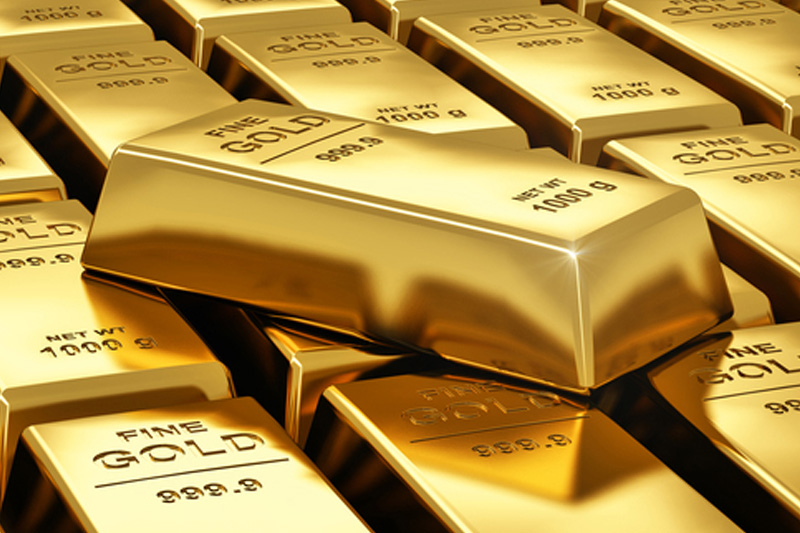Investing.com - Gold kept its upward charge for a third day in a row Thursday as the dollar tumbled on the lack of any immediate support from Federal Reserve Chair Jerome Powell for a rate in November, despite the continued threat of inflation.
The risk that war in the Middle East could get bigger, impacting more of the world economy, also drove more investors towards safe havens, propelling the yellow metal.
Gold’s most-active futures contract on New York’s Comex, December, settled up $12.20, or 0.6%, at $1,980.50 per ounce. With the three-day rally, December gold has gained more than 2% for the current week, adding to the prior week’s advance of more than 5%.
The spot price of gold, more closely watched by some traders than futures, was at $1,977.20 by 15:30 ET (19:30 GMT), up $29.52, or 1.5%. The spot price, which reflects real-time trades in bullion, is up just over 2%, extending last week’s gain of almost 5.5%.
While gold was boosted by Powell’s comments that weighed on the dollar, support was also evident from the escalating Israel-Hamas conflict, said Ed Moya, analyst at online trading platform OANDA.
“Volatility in the region is mostly expected to remain elevated and that should keep gold’s trajectory heading towards the $2,000 level,” Moya added.
Powell delivers a boon to gold longs
The dollar fell, making commodities denominated in the US currency more affordable to international buyers, after Powell failed to signal a hike for the Fed at its Nov. 2 rate decision.
“Inflation is still too high,” Powell said during a speech and responses to questions raised at an event at the Economic Club of New York. He added: “Right now the risk is still high inflation. It's possible we are going into a more inflationary period, but it's hard to know. It may be that rates haven't been high enough long enough.”
But the Fed chair could not mask his wonder on how well the US economy itself was doing despite the central bank’s aggressive rate hikes — and the relative problem of inflation caused by that.
To fight inflation, the Fed hiked interest rates 11 times between March 2022 and August 2023, raising them by 5.25% from a base rate of just 0.25%.
Despite that, the Atlanta Fed, a division of the central bank, estimates that the economy grew by an annual rate of 5.4% in the third quarter of this year versus a mere expansion of 2.1% in the second quarter.
Inflation, meanwhile, was higher than expected for a third month in a row as consumer prices grew by an annual rate of 3.7% in September, the same as in August, and higher than the 3.6% forecast by Wall Street economists.
“Economy is a story of stronger demand. The economy is very resilient, growing strongly. Growth is running above its longer run trend. That is a surprise,” he said, adding, however, that “it is very hard to know how the economy can grow with higher rates”.
As the Fed chair spoke, the selloff in US bonds accelerated on expectations that US interest rates will remain higher for longer, with the yield on the benchmark 10-Year Treasury note rising to the key psychological mark of 5% — a level last reached in June 2007.
But Powell’s disinclination to outrightly signal another rate hike also kept federal funds futures — which is an indicator of Fed rate decisions — unchanged at the prevailing 5.25%-5.50% range.
That pushed down the US Dollar Index — an instrument that pits the US currency against six of its major rivals — on the notion that the dollar will be disadvantaged in an environment where the Fed might just hold on to rates without raising them further.
(Ambar Warrick contributed to this item)
